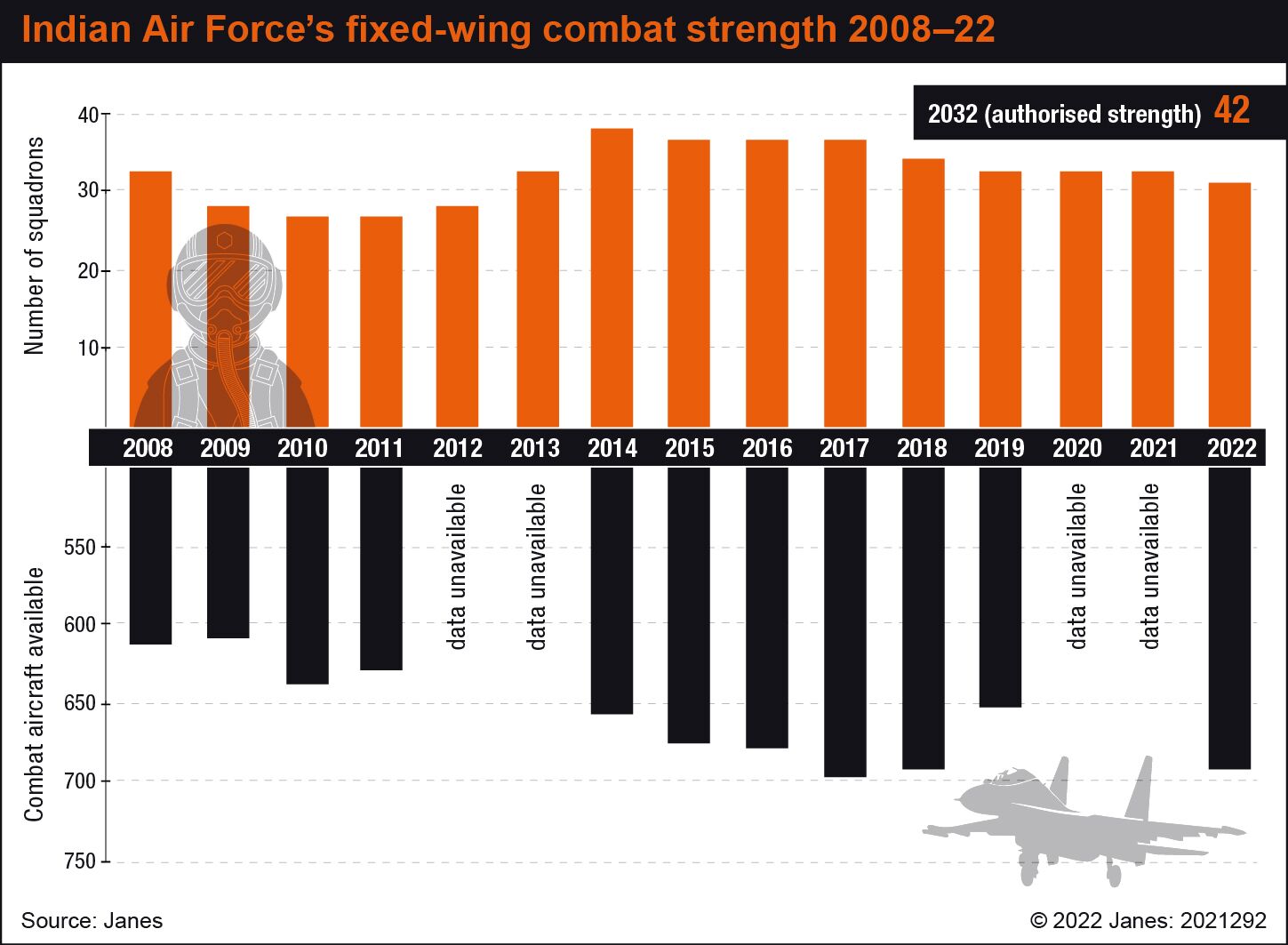
The number of active fixed-wing combat squadrons in the Indian Air Force has fluctuated in recent years because of the retirement of ageing platforms and the acquisitions of new aircraft. (Janes)
The Indian Air Force's (IAF's) fighter squadron strength has declined to 31. The air force's plan to revitalise its strength involves upgrades and the fructification of India's domestic aircraft projects.
Speaking to Janes , the IAF said that the air force is meeting emerging challenges using modern platforms such as the Dassault Rafale fighter aircraft, Boeing C-17 transport, Boeing AH-64 Apache attack helicopter, and the S-400 Triumf long-range air-defence system.
The air force added, however, that there is a need for advanced technologies. “To dominate the future battlespace, the IAF will need a fifth-generation fighter aircraft,” the IAF said. It said that it is closely following the development of the Advanced Medium Combat Aircraft (AMCA).
Data held by Janes shows a historical pattern to the IAF's declines in fixed-wing, combat squadron strength. The reductions are prompted by the retirement of platforms without viable replacements on hand.
In 2009 IAF squadron strength declined from 32 to 28 following the withdrawal of some second-generation Soviet Union-era Mikoyan-Gurevich MiG-21 and all third-generation MiG-23 aircraft. It subsequently took the air force six years to rebuild to 38 combat squadrons in 2014. This was achieved by an 82% increase in Su-30MKI inductions by the IAF over three years (Su-30MKI strength rose from 98 in 2011 to 179 in 2014, according to Janes data). However, squadron strength began to decline again in 2018, following the retirement of additional numbers of MiG-27s and old MiG-21Fs.
Looking to read the full article?
Gain unlimited access to Janes news and more...







